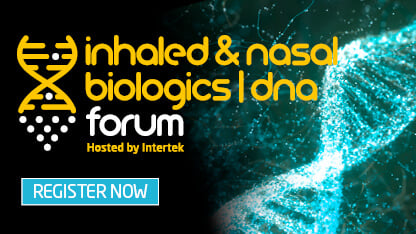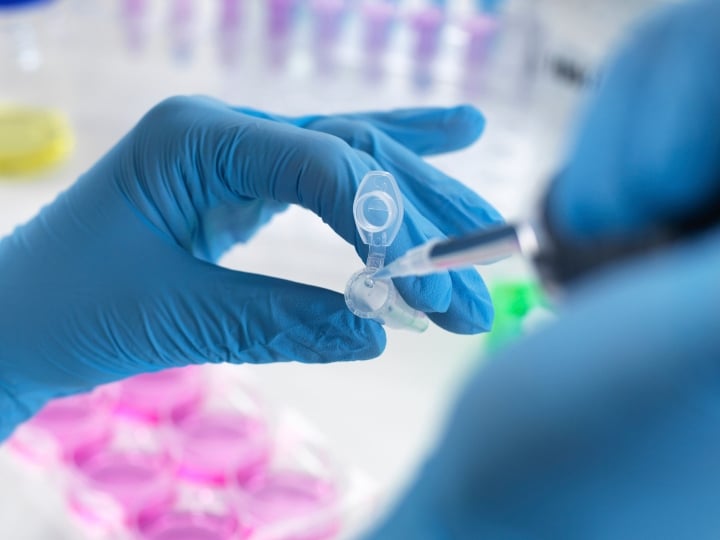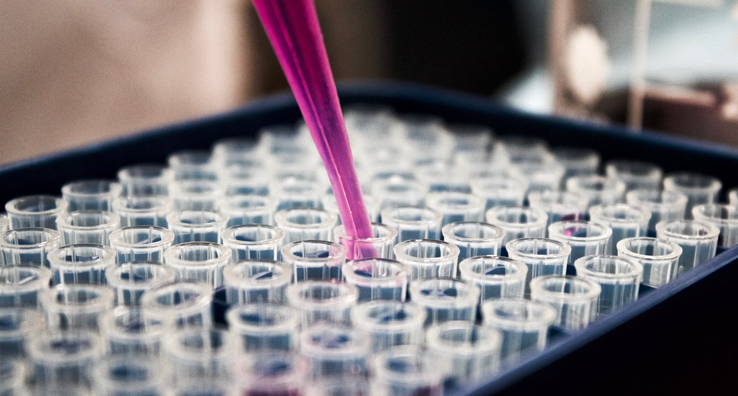Protein structure characterization and protein structure analysis in line with EMA, FDA and ICH guidelines including protein sequencing, peptide mapping, post-translational modification studies and higher-order structure studies
Protein characterisation through protein structure analysis is fundamental to biologic development and ongoing quality control, in terms of identification and product homology. Proteins have complex structures which must be characterised from the primary sequence of amino acids, through to higher order structure. In accordance with the ICH Q6B Guidelines, it is important to perform an overall assessment of structural heterogeneity to demonstrate protein identity and consistency of manufactured batches. The tests selected can be qualitative in nature, but should be highly specific for the drug product and should be based on unique aspects of the molecular structure.
Our scientists have a great deal of expertise in delivering protein characterization methods that are strategically designed to optimise the data required to determine or confirm identity, explore patterns of heterogeneity and demonstrate consistency in quality of the drug substance.
We provide extensive protein characterization during the development phase and, where necessary, following significant process changes. To support your submission, we can provide data to Good Laboratory Practice (GLP) or Good Manufacturing Practice (GMP), as appropriate, with comparison against the most suitable reference standard, if available. Our laboratories are equipped with a broad technology base and our strengths in mass spectrometry (Orbitrap and QToF) analysis, in particular, allow the ability to provide high-resolution, accurate-mass (HRAM) data.
Peptide Mapping
Intertek conduct selective fragmentation of the selected protein into discrete peptides by enzyme or chemical digestion followed by high-resolution mass spectrometry (Orbitrap, QToF) analysis. Peptide map methods can then be validated as UPLC-UV (MS) and used routinely for batch release or stability studies.
Terminal Amino Acid Sequence
Confirmation of the amino-terminal (N-terminal) and carboxy-terminal (C-terminal) amino acids is performed by MALDI-MS and high resolution mass spectrometry (Orbitrap, QToF) for product identification and to establish homogeneity, where understanding the type and extent of modifications at either termini, is a fundamental aspect of product quality control.
Disulphide Bridge Mapping and Free Sulfhydrl Group Determination
Where cysteine residues are present in the molecule, our scientists perform a qualitative / semi-quantitative assessment of the position and extent of expected and mismatched disulphide bridges by high resolution mass spectrometry (Orbitrap, QToF) and colorimetric tests for free sulfhydryl groups.
Post-Translational Modifications
Our post translational modification analysis experts apply a strategic approach to PTM analysis during early development phases to help you to establish product acceptance criteria and as part of structural characterization studies and comparability programs, stability studies or release testing.
Higher Order Structure Analysis
The higher-order structure is examined using far and near-UV circular dichroism (CD), nuclear magnetic resonance (NMR), infrared spectroscopy (FTIR), intrinsic fluorescence studies or ultraviolet-visible (UV-vis, second derivative) spectroscopy. Our biophysical characterisation suite of technologies also includes protein aggregation studies through dynamic light scattering, SEC with multi-angle laser light scattering (MALS), sedimentation velocity analytical ultracentrifugation (SV-AUC) and Differential Scanning Calorimetry (DSC).
Carbohydrate Structure
Glycosylation studies are product specific, however, these typically include determination of the levels of neutral and amino monosaccharides as well as sialic acids, assessment of glycoform distribution and glycan structure elucidation. Multiple technologies are applied to these studies including selective enzymatic cleavage and MALDI-TOF mass spectrometry, HPAEC-PAD, HILIC-FLD or CE-LIF, to provide the level of structural information required.
Positions of Conjugation
For antibody drug conjugates (ADCs) our scientists determine the position of attachment of the toxin to the linker and subsequently protein, also known as the sites of conjugation. This is typically achieved using high resolution mass spectrometry (Orbitrap, QToF) following enzymatic digestion. Similar approaches can also be applied to establishing the position of PEGylation and other conjugated forms.
Our Total Quality Assurance expertise makes Intertek the perfect partner to expedite your protein structural characterisation programs to meet your development, submission or ongoing processing needs.
4th Annual Inhaled & Nasal Biologics | DNA Forum
25-25 September 2025
Cambridge, UK
Join us for a ground-breaking and insightful forum on inhaled and nasal biologics development: Two days of cutting-edge talks and networking opportunities with leaders in this complex area of inhaled medication and inhaled vaccine development.
LEARN MORE & REGISTER

ARTICLES
New Approaches to Bioassay Design
Characterisation of Bispecifics
The Significance and Challenges of Inhaled and Nasal Biologics
Current Analytical Approaches to Biophysical Characterisation
Biosimilar Characterisation and Immunogenicity
WHITEPAPER DOWNLOADS
Liposome Physicochemical Property Analysis
Formulation of Biologics for Inhaled and Nasal Delivery
The Complexities of Antibody Drug Conjugate Characterization
BROCHURES
Download: Intertek Biopharmaceutical Services Brochure
Download: Intertek Pharmaceutical Services
COVID-19 VACCINE OR THERAPEUTIC TESTING & DEVELOPMENT SUPPORT
IMMEDIATE QUESTION? Ask our experts now
FACTSHEET: COVID-19 Vaccine or Therapeutic Testing & Development Outsourcing
ARTICLE: Repurposing Vaccines for Intranasal Development
WEBINAR: Quality Control Strategy for Vaccine Development
WEBINAR: Repurposing Drugs for Inhaled Delivery
eBOOK: Contingency Outsourcing Solutions

Pharmaceutical News & Events
- PRESS RELEASE: Lab expansion to enhance capabilities in inhaled biologics drug development
- PRESS RELEASE: Intertek partners with CrystecPharma to advance formulation science and accelerate development for dry powder inhalers
- NEW! Blog: Optimising Quality in Pharma Supply Chains
- Determination of Particles in Pharmaceuticals - Article
- Discover our Audit Live Tool for direct access to our scheduled audits
- Extractables/Leachables Lab Tour - Request access
- Medical Device Extractables & Leachables Studies
- Glycosylation Analytical Approaches for Antibody Therapeutics
- Rapid Determination of Low/Trace Level Benzene in Pharmaceutical Excipients and Finished Products

